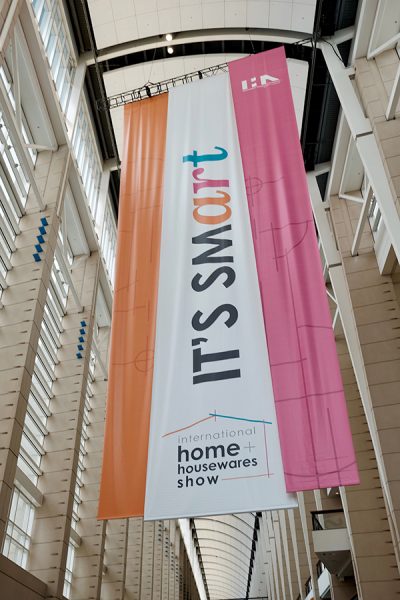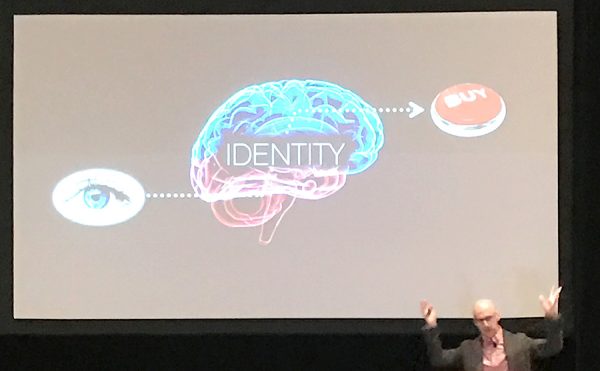3 Lessons to Boost Your Brand from the 2017 International Home and Housewares Show

My first IHA show
By Jonathan Svilar, Marketing Manager at The Companion Group
Another year, another International Home and Housewares show come and gone. For those of us building, marketing, and selling housewares, it’s THE place to find out what’s trending, what’s on the way out, and how to position our companies to take the industry by storm.

The Companion Group Booth at IHA
We loved showing off our booth, but there were a lot of educational speaking engagements to check out too. Which sessions at the show were we most excited about? Read on!
2nd Party Data: The Happy Middle Ground
One of the key aspects of marketing in the coming year is data. We’re not just talking any data though. For the past few years, the focus of “big data” has been on first-party and third-party data.
First-party data is data that you collect yourself. Email addresses from your newsletter sign up, product registrations, and people who use your contact form are all great sources for first-party data. The audiences you can build from this data are fantastic, but obviously limited to how much data you can gather on your own.
Third-party data is the data you obtain from sellers. You’ve probably gotten a poorly formatted email about this: multi-colored text, different fonts, and a lead in like “I was reviewing your company’s website and believe our [insert industry here] Contact List would make a big impact on your email marketing and prospecting efforts.” There are legitimate companies that provide lists like this that are great to work with. However, the quote above illustrates the problems surrounding third-party data: it’s impossible to tell the quality or source of the list. It could be a slam dunk, or a half court shot that hits the guy trying to take his seat behind the backboard.
Second-party data is the shift that’s going to take the world by storm in 2017. The reason why is that it combines the benefits of both first and third-party data, while avoiding the limitations of both. By forming strategic data sharing partnerships with companies in your immediate circle, you can reach customers you previously wouldn’t have been able to, all while knowing the source and quality of the data. Manufacturers can share web traffic data with their retailers to boost sales of their product in stores, and retailers can share the data from their websites with their manufacturers to provide a similar lift the other way.
91% of shoppers only end up in a store due to research and experiences they’ve had on the web. Manufacturers websites are the definitive place to gather accurate information about products. Furthermore, 50% of visitors to manufacturer websites make a purchase within 30 days of their visit. Clearly, a co-promotional strategy between retailers and manufacturers provides a path for both entities to benefit.
For more in depth coverage of this topic, check out the audio recording of the session at the IHH website. Thanks to Connie Johnson from OwnerIQ for sharing these incredible insights!
Boomers Booming
With attention being directed towards the millennial generation, are we missing out on a major piece of the pie? Marsha Everton and Whitney Ryan from AIMsights delivered a great explanation on the spending power of the Boomers generation.
While the millennial generation is already larger than the boomers generation, there are a number of statistics that suggest that focusing all of your marketing efforts on millennials leaves a lot on the table.
Boomers are living 34 years longer than their great-grand parents. That gives them a lot more time to earn and spend. Even though the population of boomers is slightly less than half (44%), a whopping 90% of advertising dollars are spent on people 20-49 years old. The real kicker is the disparity in buying power. While the millennial group is larger, the boomer generation has 70% of the disposable income and holds 83% of overall household wealth in the United States.
Since a large portion of millennials and boomers are living under the same roofs, and since boomers are more connected with their children than ever before, trends are converging across generations. Rather than focusing on age as a target demographic, it’s more important to focus both on the demographics that spend AND upcoming generations. Millennials may be the hot topic of the last few years, but it doesn’t pay off to ignore boomers!
To check out the full session, be sure to listen here.
Critter Brain
The third session we loved was Why Your Customer Bought Your Competitor’s Product, led by the engaging Michael Liebowitz of Magnetic Mind Studio. To listen to the full session, visit this link.
Before attending this session, I spoke with a coworker about Simon Sinek’s great TED Talk: How great leaders inspire action. The gist of the talk (if you haven’t heard it and don’t have a spare 17 minutes) is that great leaders) have one differentiator in common.
Every person can tell you what it is that they do. Many people can explain know how they do what they do. The great leaders that define an industry share why they do what they do. Most companies live on the outer two sections, the what and the how, but the truly great ones live, breathe, and exude the why.

Michael Liebowitz of Magnetic Mind Studio
Michael’s session was a phenomenal way to re-examine that concept through the functions of the human brain. He quite literally provided the “why” for the importance of “why.”
We’ve been thinking about branding in the entirely wrong way. When most of us think about how to position our product in the marketplace, they focus the features and benefits. Those aren’t always clear differentiators. There is always someone that comes along and copies an idea. Who’s going to win the sale in that case?
For the sake of this explanation, it’s easiest to imagine our brains in two distinct parts: the human brain, and the critter brain. The critter brain houses our instinctual impulses, the things we don’t have any control over. The Human brain processes those (after the fact) and is responsible for reasoning, logic, and memory. Turns out, we make purchasing decisions with the animal part of our brain, and only turn to the human part of our brain to rationalize the decision after the fact.
To win the sale, we need to appeal to the critter brain: we have to show people an immediately recognizable brand that the consumer identifies with. People tend to stick with things they understand, things like themselves. If they perceive your brand to share the same values they have, they’ll purchase from you and continue to be loyal. Consumers subconsciously look for some combination of belief, meaning, belonging, and uniqueness speaking to them through branding. If a company can effectively and consistently communicate those traits (or even just one of the traits) they can win a lifelong customer.
The International Home and Housewares show was an absolute whirlwind this year, but the lessons we’ve taken away from the sessions were worth the trip alone. See you there next year!









No comments yet.